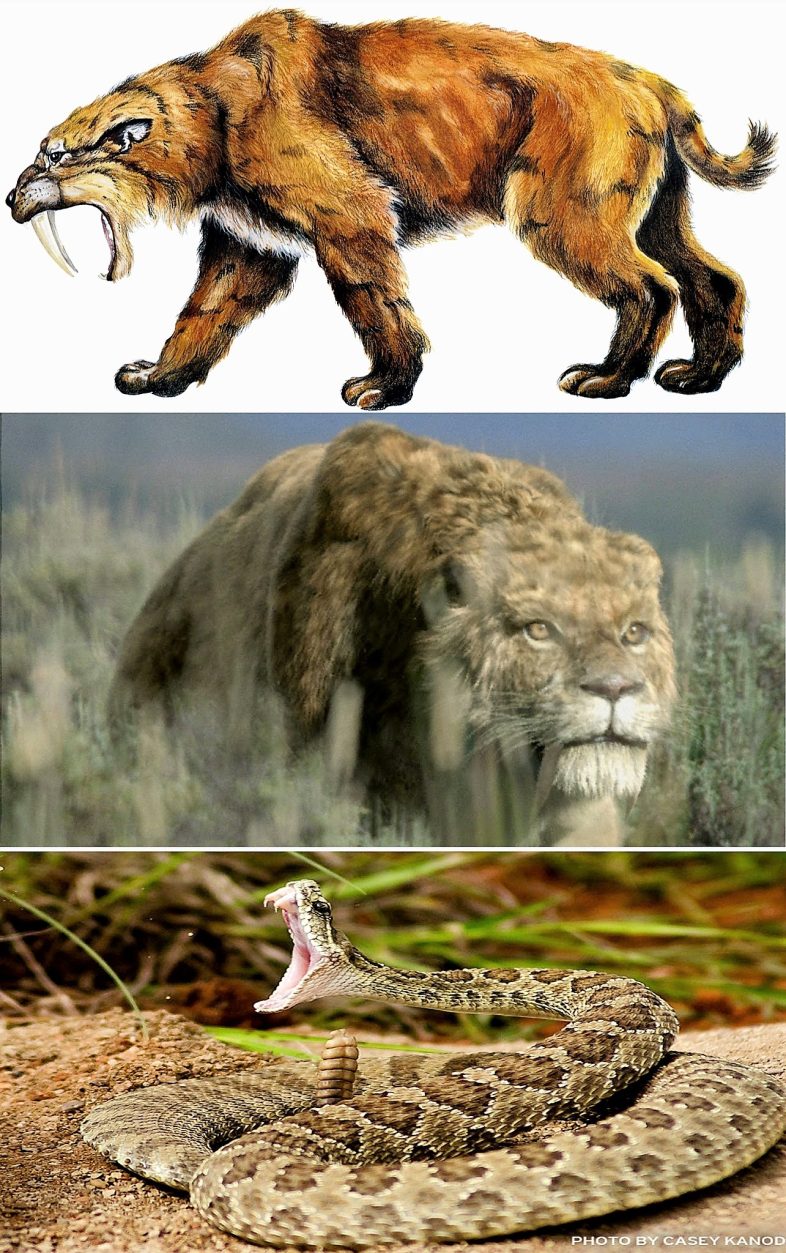In Akkadian, the oldest attested language in the world, ‘ḫūpu’ is “fear”, but what is ‘ḫūpu’?
The origin of fear for our ancestors deep in the Stone Age is natural, the origin of terror is not. Scimitar-toothed cats have several subfamily of carnivoran mammals of the family Felidae (true cats). They were endemic to Asia, Africa and other areas of the ancient world living from about 23 million until about 11,000 years ago.
Scimitar or sabre tooth tigers are ferocious killers our ancestors feared but there were many other killers living in the same environment, such as large lions, leopards and cheetahs, but none of these killers is ‘ḫūpu’.
The letter ‘Ḫ’ has the sound of German ‘ch’. The ‘u’ at the end of Akkadian entries is not pronounced so it a trilateral ‘ḫūp’ but the mono syllabic root morpheme is ‘ḪP’.
“P’ is a Yemeni letter not used by modern Arabic so it is replaced with either ‘b’ or ‘f’ or both. ‘ḪB’ is “to hide”. So it is an animal that hides. ‘ḪF’ is “fear”, so this is an animal that hides but it is not an animal to fear but fear itself.
It is the snake the bite of some of which is so large it can kill before the poison. More than death, sometimes, the effect of snake bites were terrifying, the pain excruciating and there was nothing our ancestors could do to help.
#ORIGIN_OF_TERROR_AND_FEAR*
Strangely enough, though, ‘ḪF’ that means fear also means “light shoes”. The conclusion is that the skin of snakes was probably one of the first shoes worn by our ancestors. From the same root ‘ḪBl’ “to bewilder, to go mad”, the effect of posion. ‘ḪBn’ “to fool” probably because a snake would be camouflaged and it launches surprise attacks.
From the same linguistic cluster (*ḪP/*PḪ) ‘FḪr’ “proud, pompous, attributes”. What’s the connection? Our ancestors were mesmerized by the way some snakes lift themselves up majestically and prepare to spring. So, people who stood with heads very high and look threatening were likened to snakes.
Terror
*Rʻ has several meanings including “to terrorise, to scare, thunder, nose bleed” but *Rʻ also is the famous Egyptian god. It is not really Egyptian but Arabian. How do we know that? From the linguistic cluster*Rʻ/ʻR ‘ ʻRb’ “Arabs, Simple.
The Etymology Team thinks the linguistic cluster was created by either Yemeni kings or Canaanites living in Arabia some 5,000-6,000 years ago which makes it the most recent religious linguistic cluster. Judaism, etc., came later.
One of the intentions of the inventors was to scare camel herders living in central and northern Arabia into submission by god Rʻ which means ‘herder’, so he is presented as the god of herders. The reason was those particular Arabs commanded the containers of the old times – camels, needed to transport trade across Arabia and to stop disrupting the trade routes with their raids on trade caravans.
*Rʻ is a nasty god that rules with fear. His most effective weapon is thunder *Rʻd. ‘Rʻdeed” is “coward”.
Either Yemenis who migrated to Egypt or Canaanites instituted the worship of Rʻ in Egypt. The word ‘Raʻi’ in Arabic means “god”, so nothing changed.
Last modified: June 1, 2023



